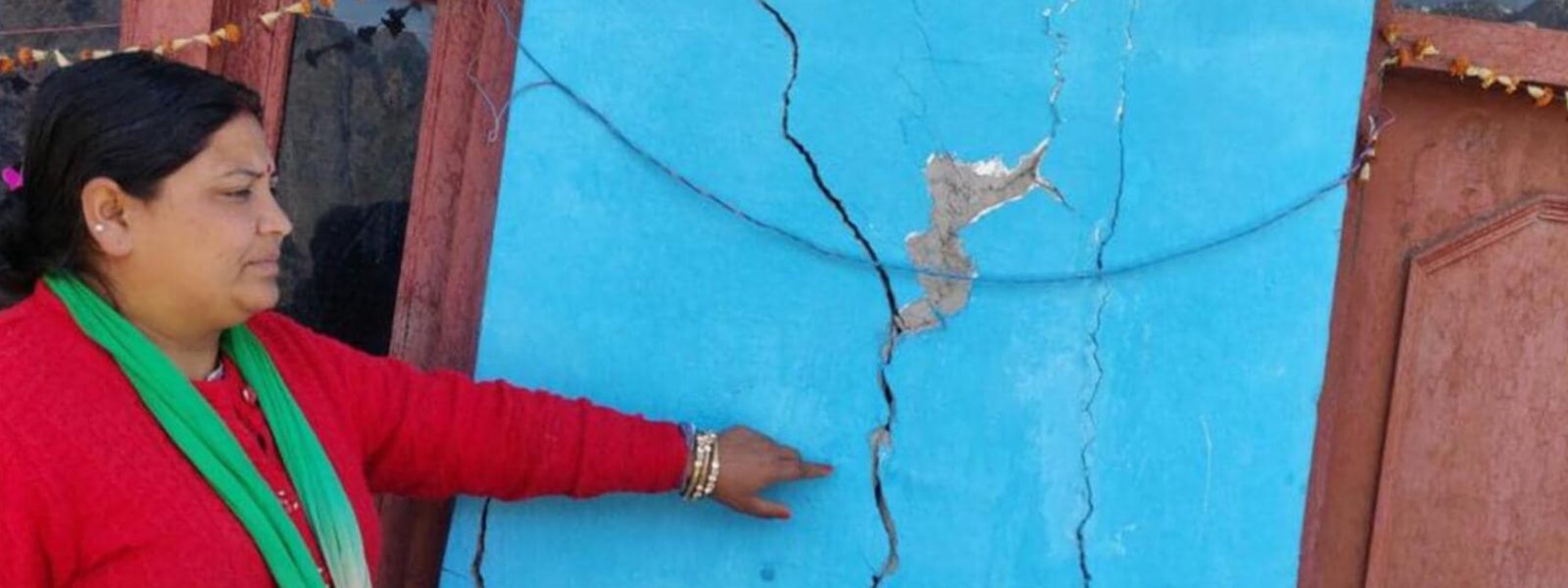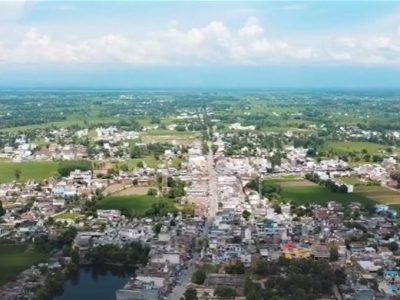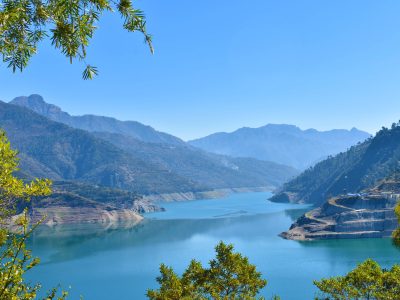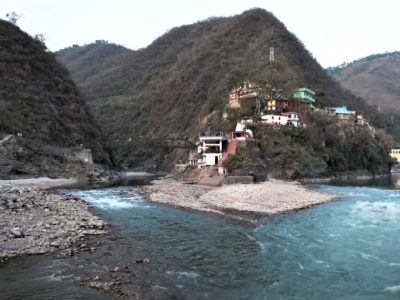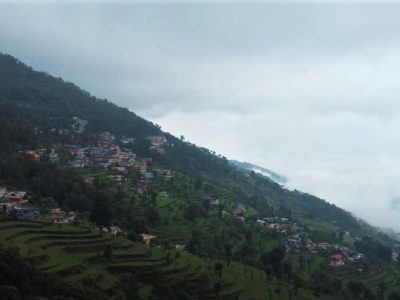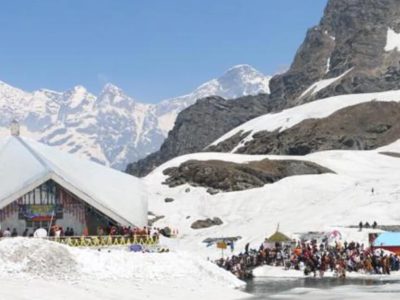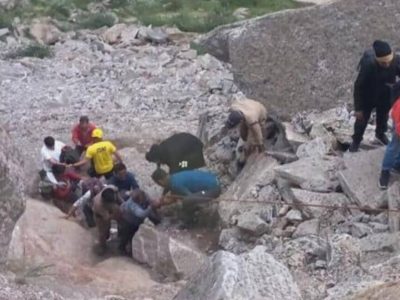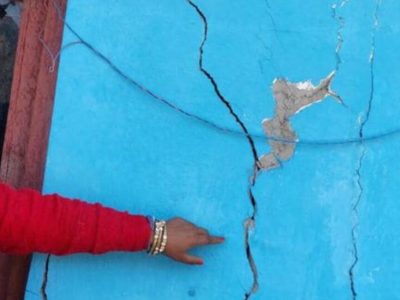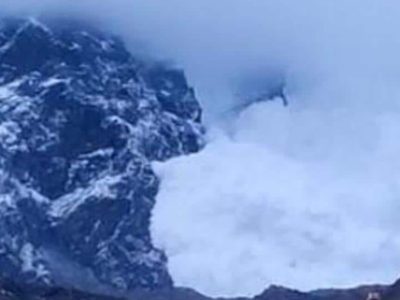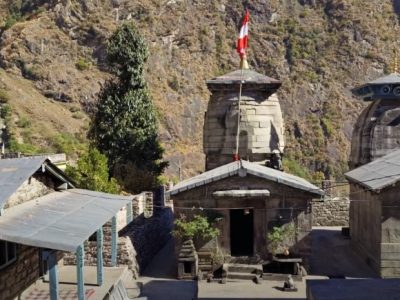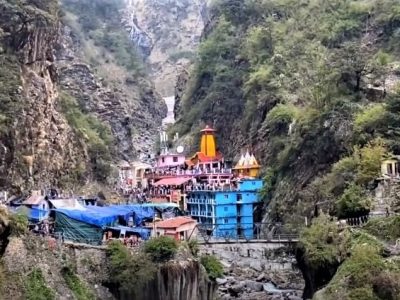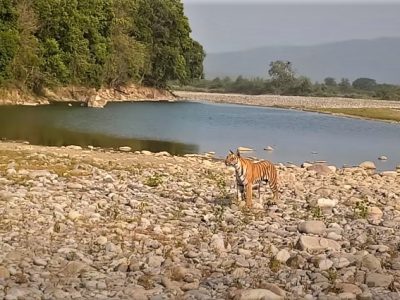The Chamoli district administration has said that it has held preparatory meetings with officials concerned and all stakeholders have been told to remain in alert mode in the crisis-hit Joshimath in view of monsoon rains.
With monsoon rains around the corner, locals as well as experts have expressed apprehensions of further geological instability in Uttarakhand’s Joshimath, where 868 structures have developed cracks and 181 have been declared unsafe so far. Meanwhile, the Chamoli district administration has said that it has held preparatory meetings with officials concerned and all stakeholders have been told to remain in alert mode in the crisis-hit Joshimath in view of monsoon rains.
Monsoon usually arrives in the state by the end of the third week of June and Chamoli district, where Joshimath falls, has a history of extreme rainfall events.
Atul Sati, convenor of the Joshimath Bachao Sangharsh Samiti (JBSS), said, “The continuous heavy rains during monsoons can percolate down into the ground fissures and cracks and aggravate the geological disturbances beneath the ground in Joshimath.”
“There are over 4000 structures located on the ancient landslide material in Joshimath and when monsoon rains will seep into the ground on a continuous basis, we don’t know how it will affect the fractured terrain of the town. Cracks have already widened in some houses in the Singh Dhar area here, ” he said.
Nain Singh Bhandari, president of Joshimath Vyapar Mandal, said, “During monsoon, when the town would receive heavy rainfall, there is the possibility that the situation could further worsen.”
YP Sundriyal, a geologist from HNB Garhwal University, Srinagar, said, “The problem is not occasional rains but continuous rains during monsoons which can increase the pressure in the fissures,” he said.
While the state receives an average annual rainfall of 1162.7 mm, Chamoli reports 1230.8 mm annual rainfall.
During last year’s monsoon when the state received 1128.0 mm rainfall (June -September), Chamoli was one of the two districts among the state’s 13 districts, which received the highest rainfall. Chamoli received 1196.4 mm of rainfall.
As a larger part of Chamoli district is situated on the southern slopes of the outer Himalayas, monsoon currents penetrate through trenched valleys, with rainfall reaching its maximum in the monsoon season that spans between June to September.
According to the India Meteorological Department IMD rainfall data for hundred years (1901-2000), Chamoli received 537.9 mm rainfall in July 2013, which was the second highest recorded rainfall in the district since 1901-2000 and 2008-2013. The Maximum rainfall of 860.7 mm in the 100-year period was reported in September 1924.
The February 2021 Chamoli tragedy near Raini village, which is just 20 km from Joshimath, shows how vulnerable the area is to disasters. The flash floods had killed 204 people, with only 92 bodies recovered so far. These flash floods in Alaknanda River, flowing at the base of the Joshimath town, had eroded the toe at the base of the town, with locals claiming it could be one of the causes of instability of Joshimath’s landmass.
Geologist Sundriyal said, “The best option at present is to keep people away from such areas. The government can’t stop geological instability or heavy rains in Joshimath. They have to focus their attention on the safety of people and take measures accordingly.”
Chamoli district magistrate Himanshu Khurana said, “An integrated control room has been set up here which is keeping a tab on the developments and will respond quickly whenever required.”
“State Disaster Management Force personnel and National Disaster Response Force personnel are also deployed in and around Joshimath. We are not only keeping watch on the areas where ground fissures and cracks have been reported, but in other areas of the Joshimath as well. Officials have been deputed ward-wise who are looking into all these aspects,” he added.
Khurana said the administration is also discouraging people from returning to their homes.
Nain Singh Bhandari said, “Earlier the government had said that 2,000 temporary structures will be built for the affected people. However, so far only 15 temporary structures have been built and no one has gone to live in those temporary structures.”
Atul Sati said, “The government has not yet shared the data on what caused the problem here. We have been demanding the authorities to declare Joshimath crisis as a national disaster but the same has not been done.”

